The Critical Assessment of Small Molecule Identification (CASMI): Challenges and Solutions
Abstract
:1. Introduction
2. LC-HRMS Challenges and Solutions (Category 1 and 2)
2.1. LC-HRMS Challenges 1 to 6
| Challenge | Trivial Name | Formula | Exact mass |
|---|---|---|---|
| 1 | Kanamycin A | C18H36N4O11 | 484.2381 |
| 2 | 1,2-Bis-O-sinapoyl-beta-D-glucoside | C28H32O14 | 592.1792 |
| 3 | Glucolesquerellin | C14H27NO9S3 | 449.0848 |
| 4 | Escholtzine | C19H17NO4 | 323.1158 |
| 5 | Reticuline | C19H23NO4 | 329.1627 |
| 6 | Rheadine | C21H21NO6 | 383.1369 |
| 10 | 1-Aminoanthraquinone | C14H9NO2 | 223.0633 |
| 11 | 1-Pyrenemethanol | C17H12O | 232.0888 |
| 12 | alpha-(o-Nitro-p-tolylazo)acetoacetanilide | C17H16N4O4 | 340.1172 |
| 13 | Benzyldiphenylphosphine oxide | C19H17OP | 292.1017 |
| 14 | 1H-Benz[g]indole | C12H9N | 167.0735 |
| 15 | 1-Isopropyl-5-methyl-1H-indole-2,3-dione | C12H13NO2 | 203.0946 |
| 16 | [1-(4-methoxyanilino)-1-oxopropan-2-yl] 6-oxo-1-propylpyridazine-3-carboxylate | C18H21N3O5 | 359.1481 |
| 17 | Nitrin | C13H13N3 | 211.1109 |
2.2. LC-HRMS Challenges 10 to 17
3. GC-MS Challenges and Solutions (Category 3 and 4)
| Challenge | Trivial Name | Formula | Exact mass |
|---|---|---|---|
| 1 | Phthalic anhydride | C8H4O3 | 148 |
| 2 | Phthalimide | C8H5NO2 | 147 |
| 3 | 2-Chlorobenzyl alcohol | C7H7ClO | 142 |
| 4 | 4-Chlorobenzyl alcohol | C7H7ClO | 142 |
| 5 | 1,4-Dichlorobenzene | C6H4Cl2 | 146 |
| 6 | Acenaphthene | C12H10 | 154 |
| 7 | 4-Chlorobenzoic acid | C7H5ClO2 | 156 |
| 8 | Fluorene | C13H10 | 166 |
| 9 | Methyl 2-chlorobenzoate | C8H7ClO2 | 170 |
| 10 | 2,4,6-Trichlorophenol | C6H3Cl3O | 196 |
| 11 | Formothion | C6H12NO4PS2 | 257 |
| 12 | alpha-Hexachlorocyclohexane | C6H6Cl6 | 290 |
| 13 | Dimethyl carbonotrithioate | C3H6S3 | 138 |
| 14 | O,O,O-Trimethyl thiophosphate | C3H9O3PS | 156 |
| 15 | Dibenzofuran | C12H8O | 168 |
| 16 | O,S,S-Trimethyl phosphorodithioate | C3H9PS2O2 | 172 |
3.1. GC-MS Challenges 1 and 2
3.2. GC-MS Challenges 3 to 16
4. Recommendation for Future CASMIs
Acknowledgments
Conflict of Interest
Appendix
A. Annotated spectra
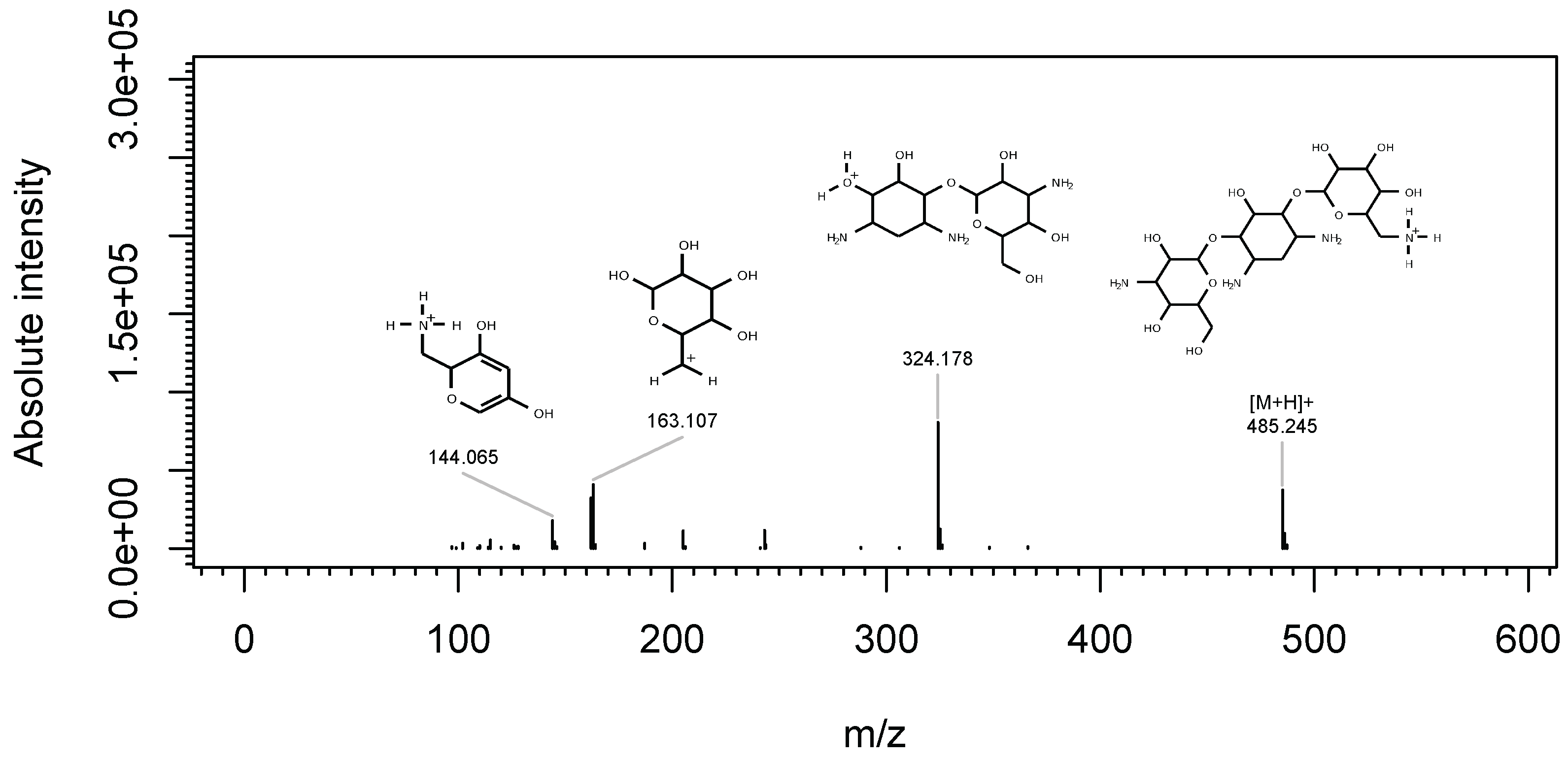



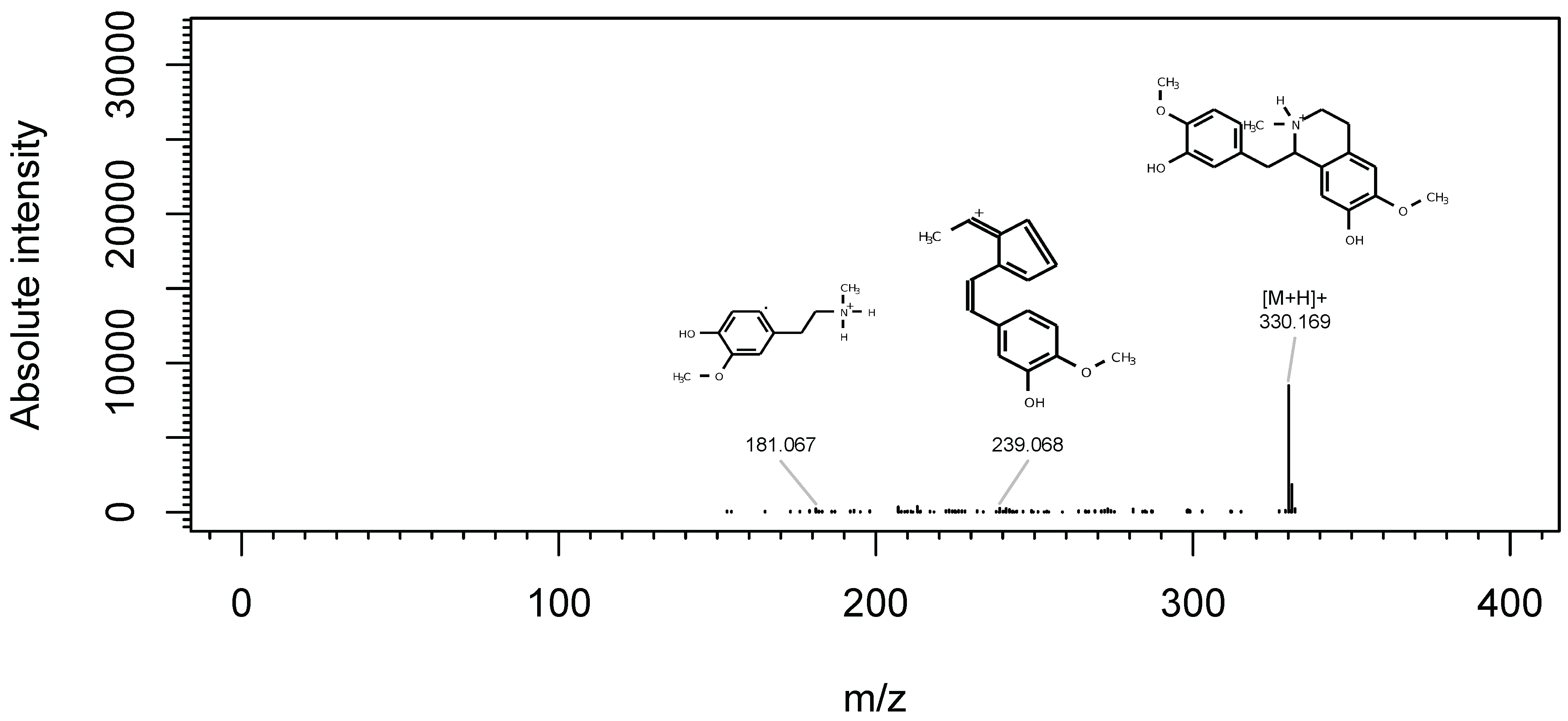
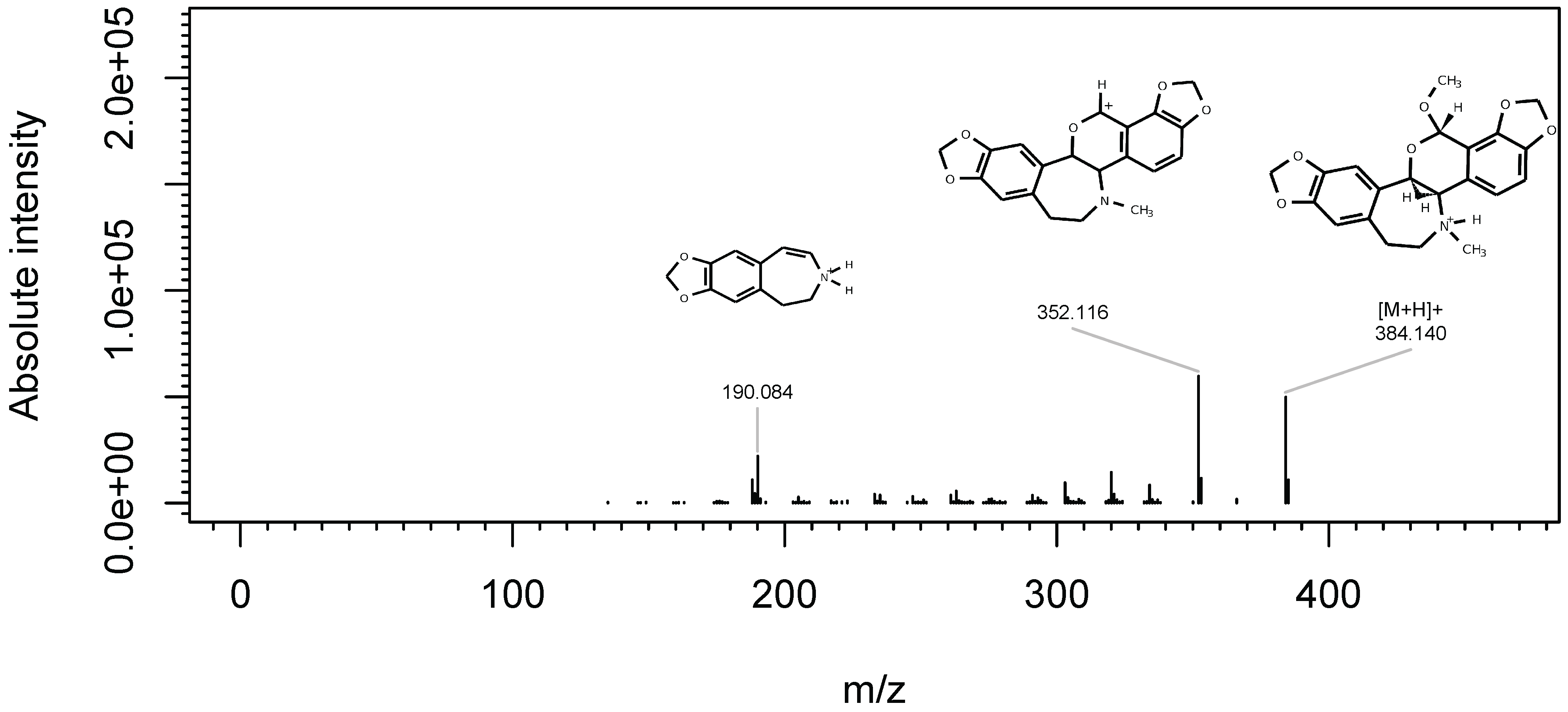
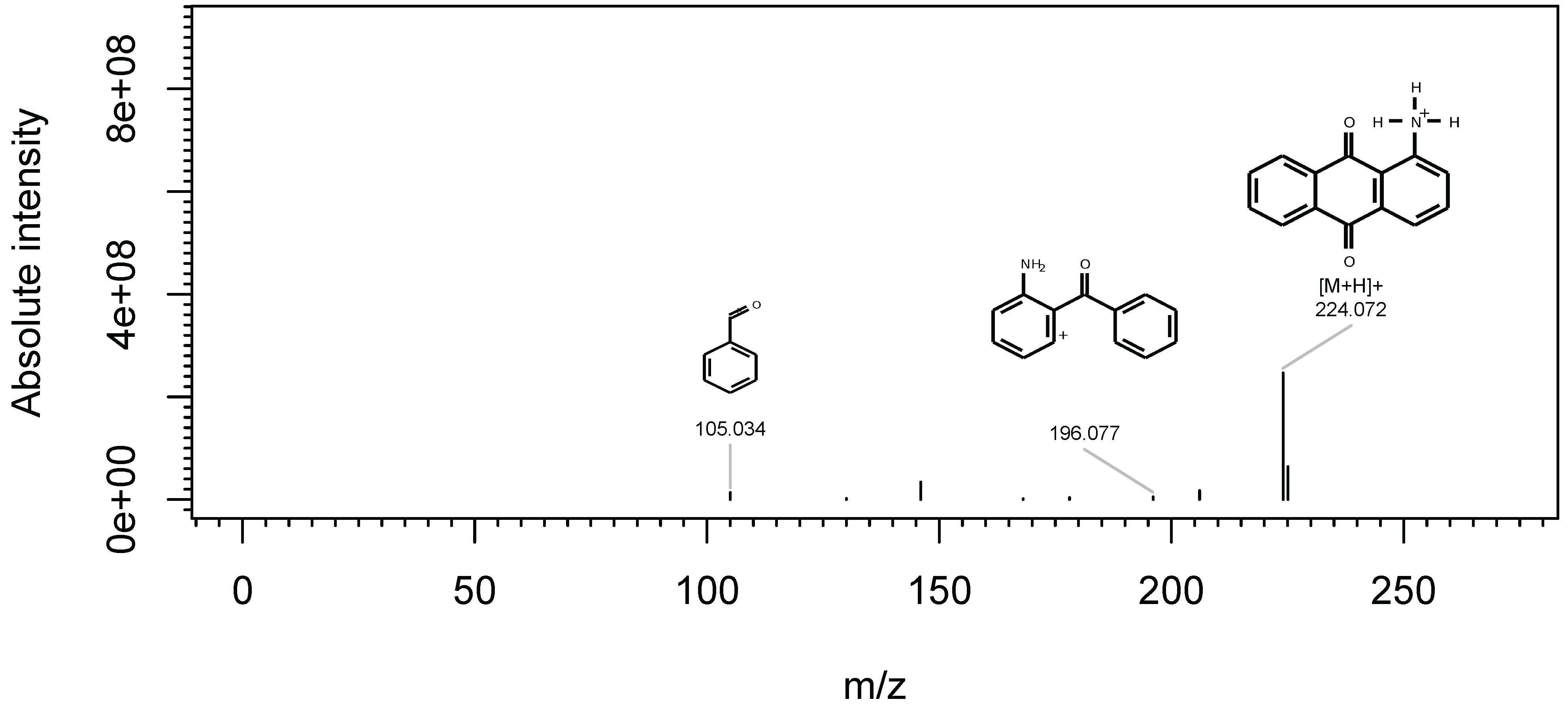
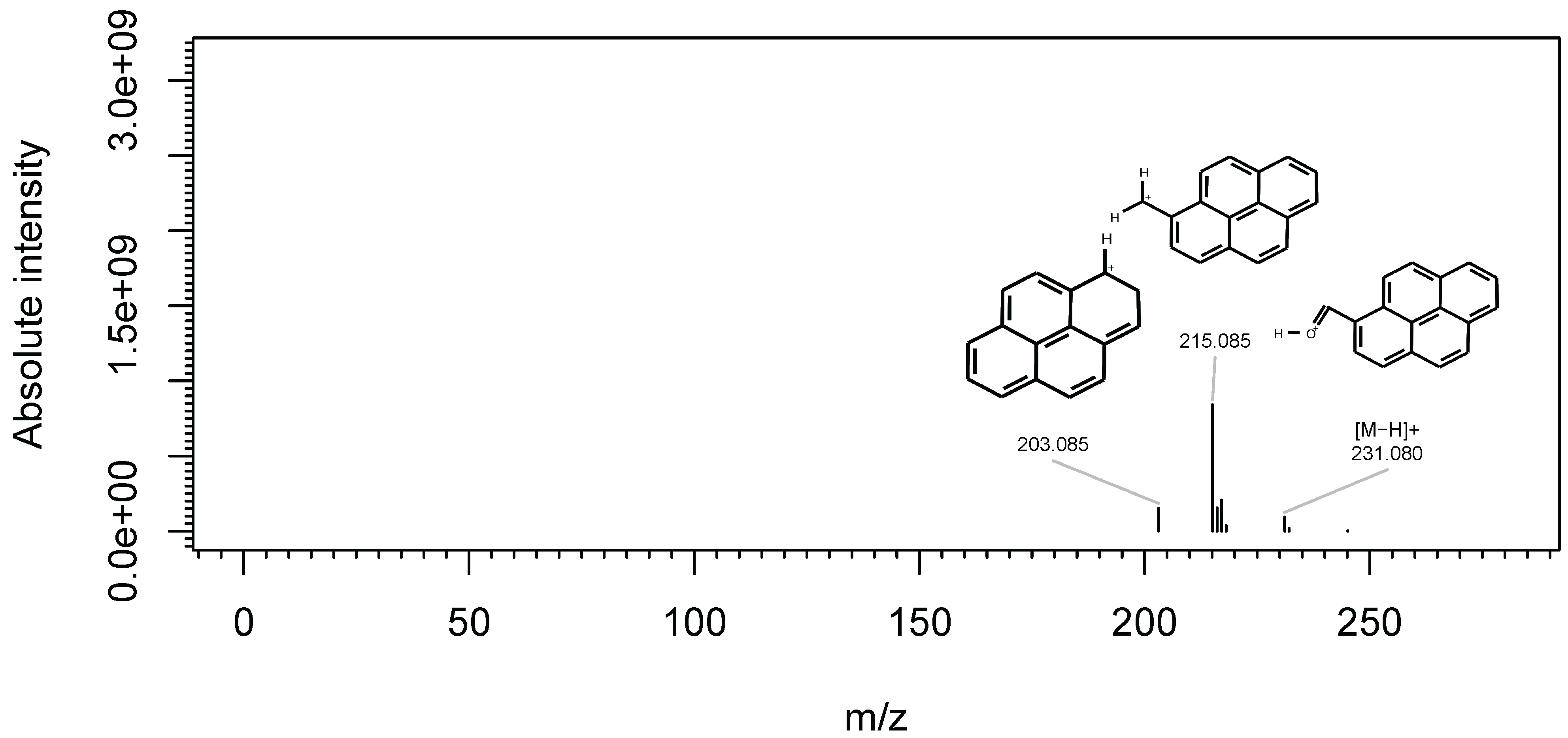

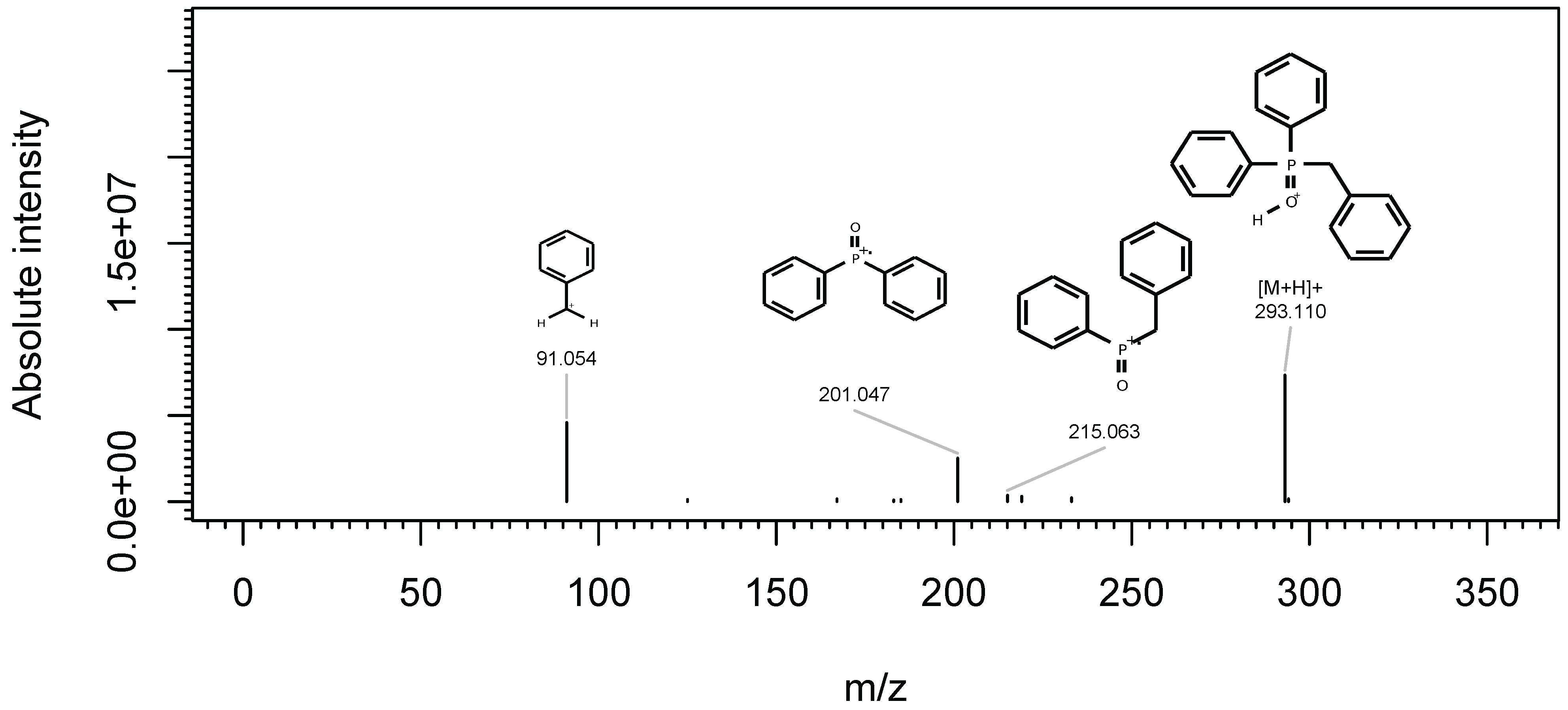
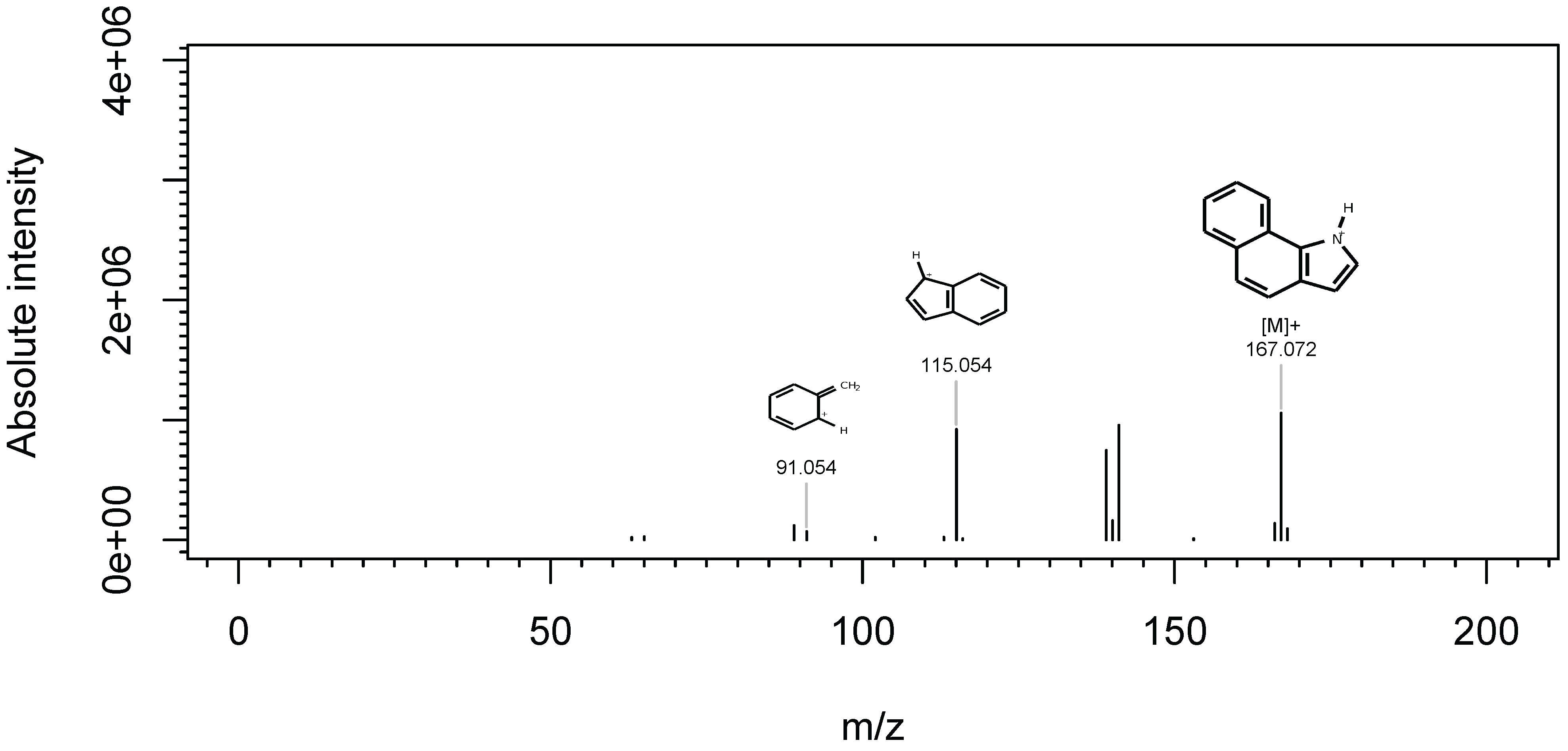
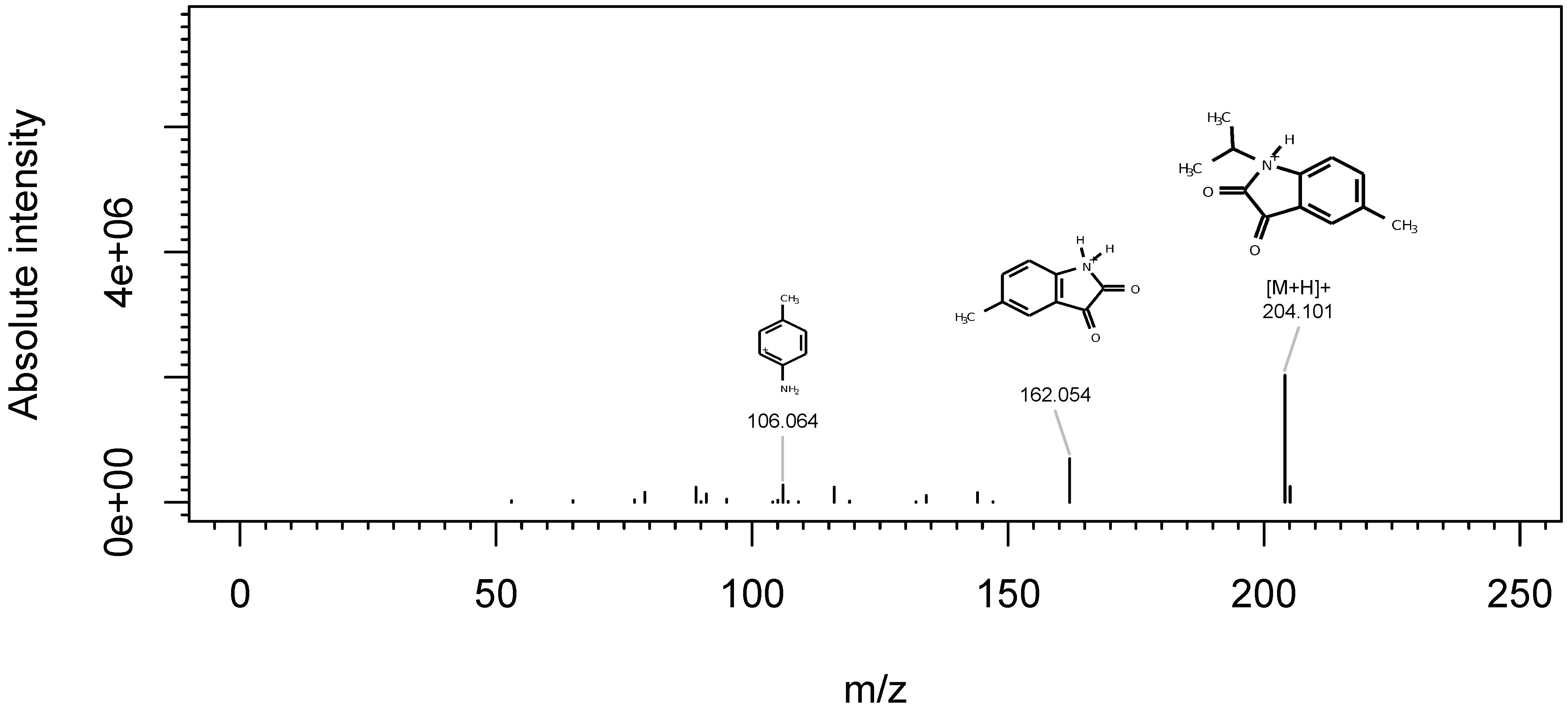


B. Structures for the LC-HRMS challenges (Categories 1 and 2)
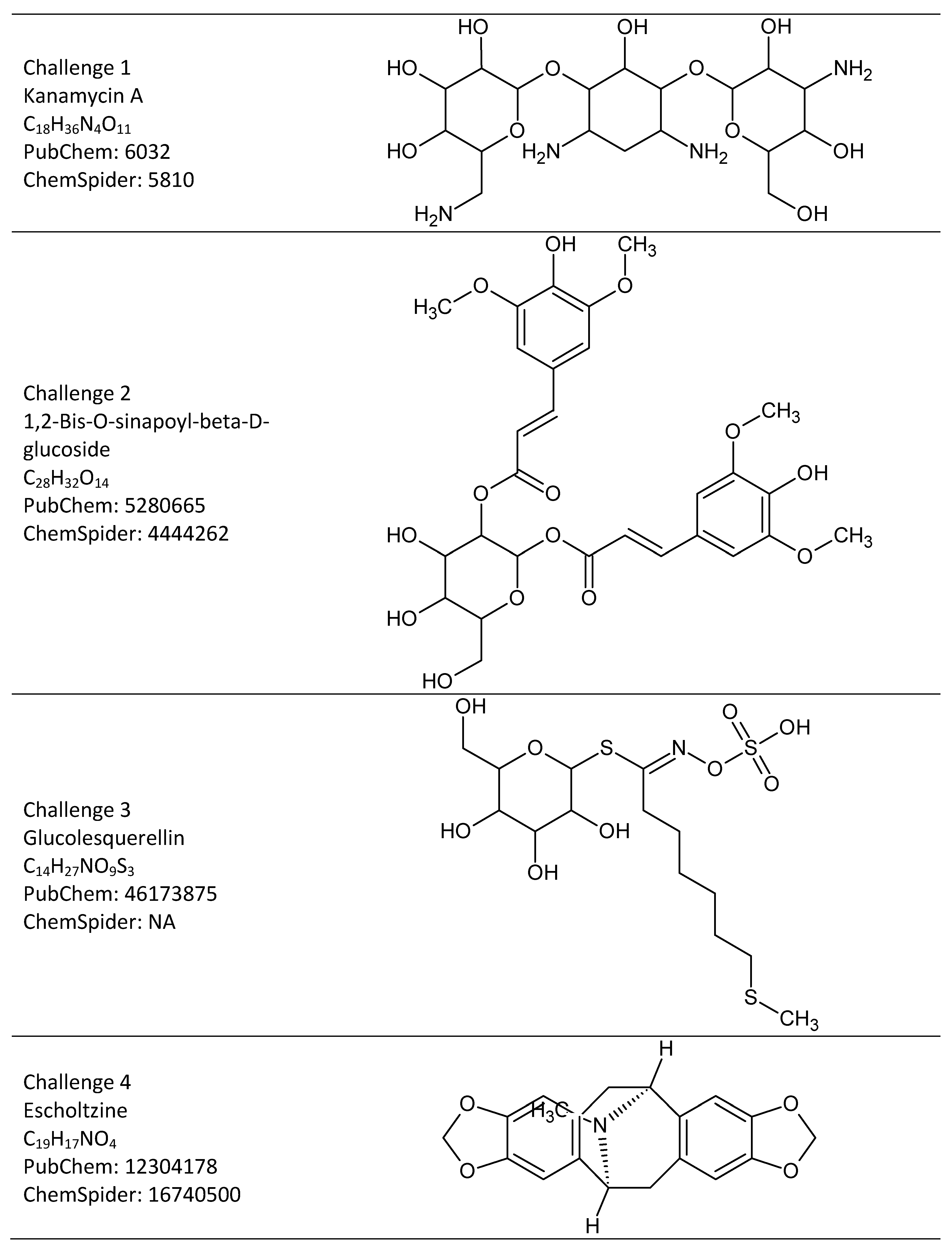
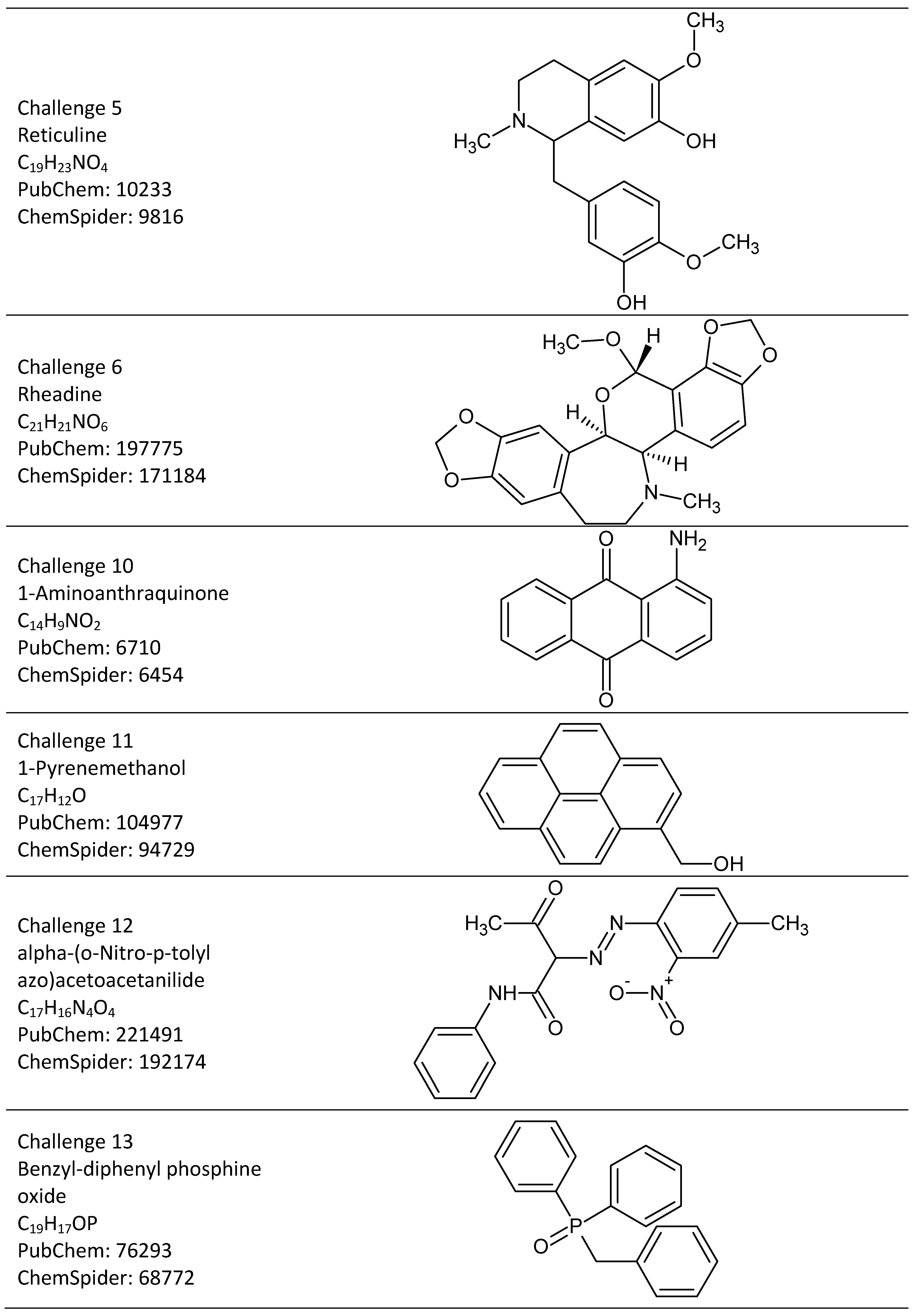
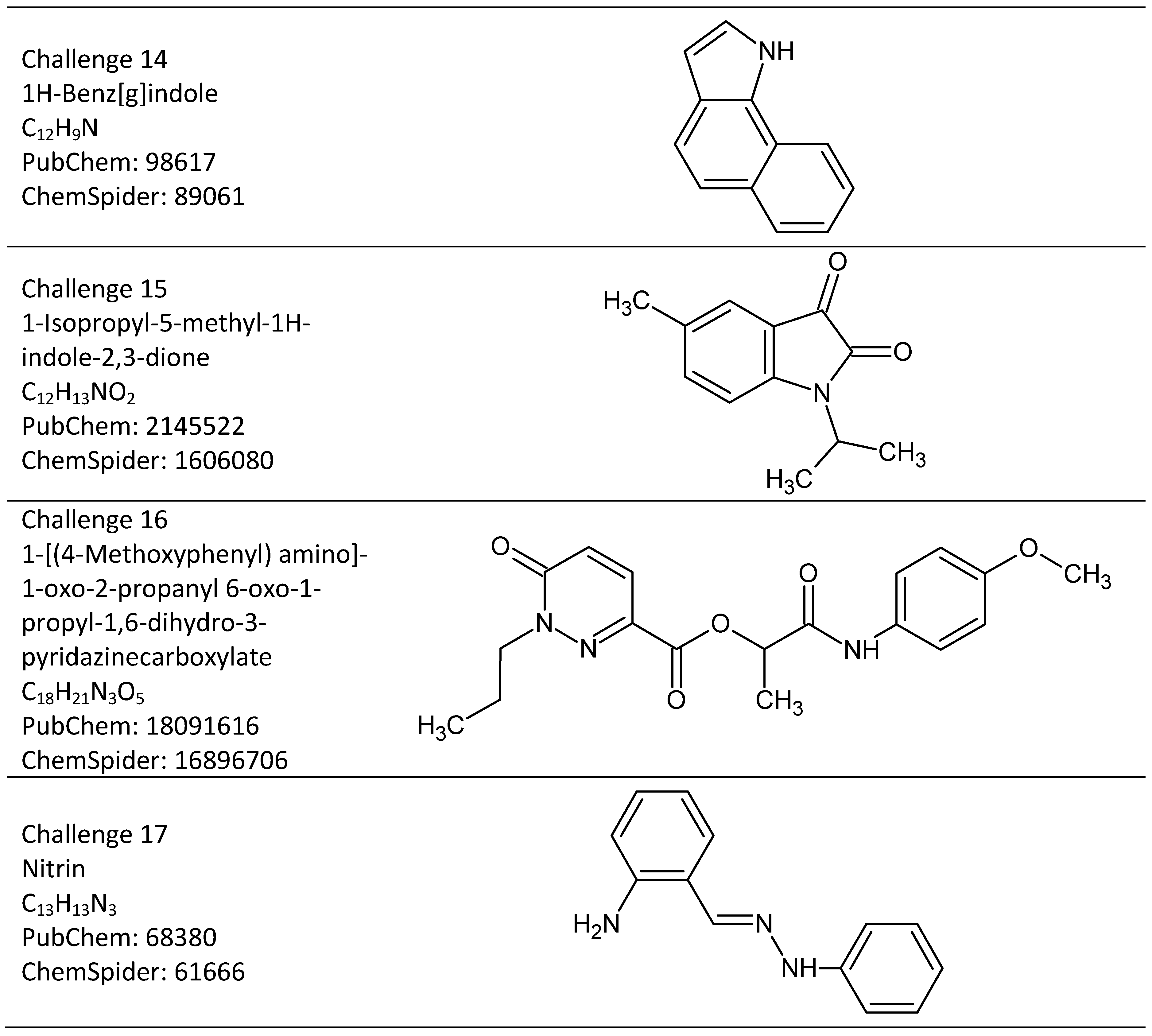
C. Structures for GC-MS Challenges
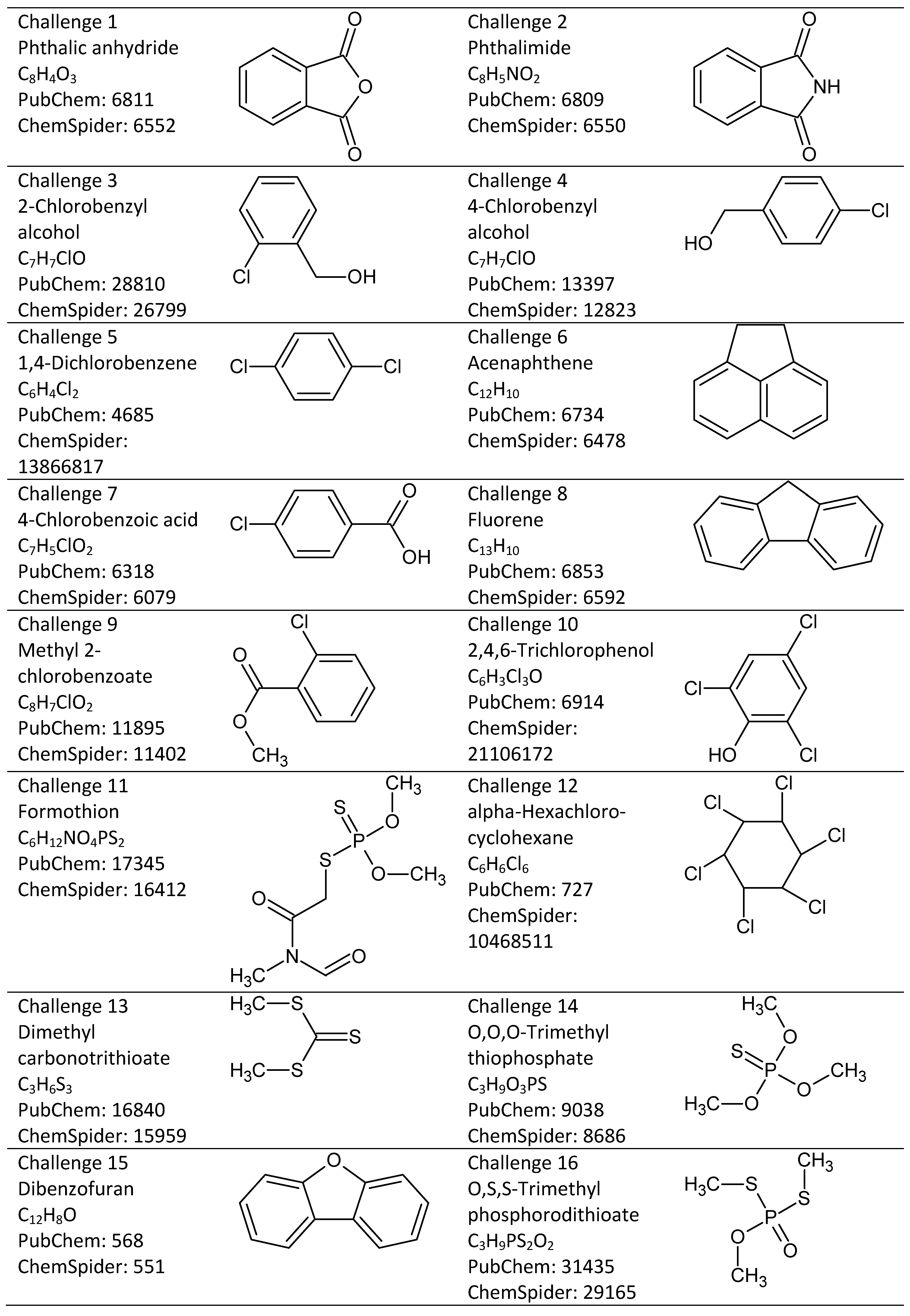
References
- Schymanski, E.L.; Neumann, S. CASMI website. Available online: http://www.casmi-contest.org/ (accessed on 28 February 2013).
- NIST/EPA/NIH. NIST 2011Mass Spectral Library; National Institute of Standards and Technology, US Secretary of Commerce: Gaithersburg, Maryland, USA, 2011.
- Schymanski, E.L.; Neumann, S. CASMI: And The Winner is …. Metabolites 2013, 3, 412–439. [Google Scholar] [CrossRef]
- ACD. ACD/ChemSketch (Freeware) 12.00 (Version 12.01), Advanced Chemistry Development, Inc.: Toronto, Canada, 2010.
- HighChem. Mass Frontier Version 6.0, HighChem/Thermo Scientific: Bratislava, Slovakia, 2013.
- O’Boyle, N.M.; Banck, M.; James, C.A.; Morley, C.; Vandermeersch, T.; Hutchison, G.R. Open Babel: An open chemical toolbox. J. Cheminform. 2011, 3. [Google Scholar] [CrossRef]
- R Development Core Team. The R Project. Available online: http://www.r-project.org/ (accessed on 12 March 2013).
- Horai, H.; Arita, M.; Kanaya, S.; Nihei, Y.; Ikeda, T.; Suwa, K.; Ojima, Y.; Tanaka, K.; Tanaka, S.; Aoshima, K.; et al. MassBank: A public repository for sharing mass spectral data for life sciences. J. Mass Spectrom. 2010, 45, 703–714. [Google Scholar]
- Tautenhahn, R.; Böttcher, C.; Neumann, S. Highly sensitive feature detection for high resolution LC/MS. BMC Bioinform. 2008, 9. [Google Scholar] [CrossRef]
- Kuhl, C.; Tautenhahn, R.; Böttcher, C.; Larson, T.R.; Neumann, S. CAMERA: An integrated strategy for compound spectra extraction and annotation of liquid chromatography/mass spectrometry data sets. Anal. Chem. 2012, 84, 283–289. [Google Scholar]
- Neumann, S.; Thum, A.; Böttcher, C. Nearline acquisition and processing of liquid chromatography-tandem mass spectrometry data. Metabolomics 2013, 9, 84–91. [Google Scholar]
- Wolfram, K.; Schmidt, J.; Wray, V.; Nimtz, M.; Milkowski, C.; Schliemann, W.; Strack, D. Profiling of phenylpropanoids in transgenic low-sinapine oilseed rape (Brassica napus). Phytochemistry 2010, 71, 1076–1084. [Google Scholar]
- Brown, P.D.; Tokuhisa, J.G.; Reichelt, M.; Gershenzon, J. Variation of glucosinolate accumulation among different organs and developmental stages of Arabidopsis thaliana. Phytochemistry 2003, 62, 471–481. [Google Scholar] [CrossRef]
- Gallampois, C.M.G.; Faculty of Mathematics, Informatics and Natural Sciences, RWTH Aachen, Germany. Integrated Biological-Chemical Approach for the Identification of Polyaromatic Mutagens in Surface Waters. PhD thesis, 2012. [Google Scholar]
- Stravs, M.A.; Schymanski, E.L.; Singer, H.P.; Hollender, J. Automatic recalibration and processing of tandem mass spectra using formula annotation. J. Mass Spectrom. 2013, 48, 89–99. [Google Scholar] [CrossRef]
- Chiaia-Hernandez, A.C.; Krauss, M.; Hollender, J. Screening of lake sediments for emerging contaminants by liquid chromatography atmospheric pressure photoionization and electrospray ionization coupled to high resolution mass spectrometry. Environ. Sci. Technol. 2013, 47, 976–986. [Google Scholar]
- The MassBank Consortium. MassBank Mass Spectral Database. Available online: http://www.massbank.jp/ (accessed on 09 January 2013).
- Wolf, S.; Schmidt, S.; Müller-Hannemann, M.; Neumann, S. In silico fragmentation for computer assisted identification of metabolite mass spectra. BMC Bioinform. 2010, 11. [Google Scholar] [CrossRef]
- Shaffer, C.J.; Schröder, D.; Alcaraz, C.; Žabka, J.; Zins, E.L. Reactions of doubly ionized benzene with nitrogen and water: A nitrogen-mediated entry into superacid chemistry. Chem. Phys. Chem. 2012, 13, 2688–2698. [Google Scholar] [CrossRef]
- Schymanski, E.; Gallampois, C.; Krauss, M.; Meringer, M.; Neumann, S.; Schulze, T.; Wolf, S.; Brack, W. Consensus structure elucidation combining GC/EI-MS, structure generation, and calculated properties. Anal. Chem. 2012, 84, 3287–3295. [Google Scholar] [CrossRef]
- Meinert, C.; Schymanski, E.; Kuster, E.; Kuhne, R.; Schuurmann, G.; Brack, W. Application of preparative capillary gas chromatography (pcGC), automated structure generation and mutagenicity prediction to improve effect-directed analysis of genotoxicants in a contaminated groundwater. Environ. Sci. Pollut. Res. 2010, 17, 885–897. [Google Scholar] [CrossRef]
- Schymanski, E.L.; Meinert, C.; Meringer, M.; Brack, W. The use of MS classifiers and structure generation to assist in the identification of unknowns in effect-directed analysis. Anal. Chem. Acta 2008, 615, 136–147. [Google Scholar] [CrossRef]
© 2013 by the authors; licensee MDPI, Basel, Switzerland. This article is an open access article distributed under the terms and conditions of the Creative Commons Attribution license (http://creativecommons.org/licenses/by/3.0/).
Share and Cite
Schymanski, E.L.; Neumann, S. The Critical Assessment of Small Molecule Identification (CASMI): Challenges and Solutions. Metabolites 2013, 3, 517-538. https://doi.org/10.3390/metabo3030517
Schymanski EL, Neumann S. The Critical Assessment of Small Molecule Identification (CASMI): Challenges and Solutions. Metabolites. 2013; 3(3):517-538. https://doi.org/10.3390/metabo3030517
Chicago/Turabian StyleSchymanski, Emma L., and Steffen Neumann. 2013. "The Critical Assessment of Small Molecule Identification (CASMI): Challenges and Solutions" Metabolites 3, no. 3: 517-538. https://doi.org/10.3390/metabo3030517







